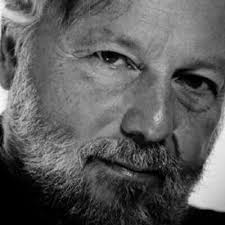 Today marks another milestone for the commons: the release of the 2016 State of the Commons, our annual deep dive and celebration of the global community working to further collaboration, creativity, and access to creativity and knowledge. This year’s report goes beyond data and metrics to focus on the people that power the commons in every region of the world. These stories illustrate how our movement is growing and evolving, driven by people who choose to share. The commons continues to grow, with the total number of CC licensed works now at 1.2 billion in 2016, including the increased use of licenses that invite remix, commercial use, and collaboration – up to 65% of all content shared this year...
Today marks another milestone for the commons: the release of the 2016 State of the Commons, our annual deep dive and celebration of the global community working to further collaboration, creativity, and access to creativity and knowledge. This year’s report goes beyond data and metrics to focus on the people that power the commons in every region of the world. These stories illustrate how our movement is growing and evolving, driven by people who choose to share. The commons continues to grow, with the total number of CC licensed works now at 1.2 billion in 2016, including the increased use of licenses that invite remix, commercial use, and collaboration – up to 65% of all content shared this year...
 In June 2020, the Secretary-General of the United Nations published a "Roadmap for Digtal Cooperation." In this report, he expanded on recommendations made a year before, calling on all actors, including the Member States, the United Nations system, the private sector, and others, to promote digital public goods. He says to realize the benefits of increased internet connectivity, open source projects in the form of digital public goods must be at the center. While the term "digital public good" appears as early as April 2017, this report offers the first broadly accepted definition of digital public goods...The Digital Public Goods Alliance (DGPA) translated that definition into a nine-indicator open standard that we hope will serve as a comprehensive, shared definition to promote the discovery, development, use of, and investment in digital public goods for a more equitable world.
In June 2020, the Secretary-General of the United Nations published a "Roadmap for Digtal Cooperation." In this report, he expanded on recommendations made a year before, calling on all actors, including the Member States, the United Nations system, the private sector, and others, to promote digital public goods. He says to realize the benefits of increased internet connectivity, open source projects in the form of digital public goods must be at the center. While the term "digital public good" appears as early as April 2017, this report offers the first broadly accepted definition of digital public goods...The Digital Public Goods Alliance (DGPA) translated that definition into a nine-indicator open standard that we hope will serve as a comprehensive, shared definition to promote the discovery, development, use of, and investment in digital public goods for a more equitable world.
 This is the third article in our "Open Leadership Development" series. In part 1, I shared how we got started with building a leadership development system for our open organization. In part 2, I walked through four stages of leadership development in an open organization. Now, I'd like to share some leadership tools we've created for our open organization and published on GitHub under a Creative Commons license. One of my favorite homegrown pieces of our open leadership system is the OPT model, which was developed by my colleague Jan Smith, based on her observations within Red Hat and experience working with various leadership models. As you'll see, it's a strengths-based approach to development...
This is the third article in our "Open Leadership Development" series. In part 1, I shared how we got started with building a leadership development system for our open organization. In part 2, I walked through four stages of leadership development in an open organization. Now, I'd like to share some leadership tools we've created for our open organization and published on GitHub under a Creative Commons license. One of my favorite homegrown pieces of our open leadership system is the OPT model, which was developed by my colleague Jan Smith, based on her observations within Red Hat and experience working with various leadership models. As you'll see, it's a strengths-based approach to development... Over the past few years, interest in both civilian and commercial use of drones has continued to grow rapidly, and drone hardware sits at the top of many people's holiday wish lists. Even just within the civilian side of things, the list of unmanned aerial devices that fit the moniker of drone seems to be constantly expanding. These days, the term seems to encompass everything from what is essentially a cheap, multi-bladed toy helicopter, all the way up to custom-built soaring machines with incredibly adept artificial intelligence capabilities...
Over the past few years, interest in both civilian and commercial use of drones has continued to grow rapidly, and drone hardware sits at the top of many people's holiday wish lists. Even just within the civilian side of things, the list of unmanned aerial devices that fit the moniker of drone seems to be constantly expanding. These days, the term seems to encompass everything from what is essentially a cheap, multi-bladed toy helicopter, all the way up to custom-built soaring machines with incredibly adept artificial intelligence capabilities... As you've surfed the web, you've surely come across many sites using embedded maps to display data. Humans are visual creatures, so presenting temperatures, crime statistics, or population densities on a map often makes quickly discerning patterns and spatial relationships easier than presenting the same facts as a boring table. Visualizations based on maps can be quite sophisticated and even show patterns across time as well as space; Maps Mania is one blog showcasing many great examples of online maps. But displaying data on an embedded map doesn't need to be a complicated affair. You can do it using open source tools. In this post, I offer some tips for getting started doing this...
As you've surfed the web, you've surely come across many sites using embedded maps to display data. Humans are visual creatures, so presenting temperatures, crime statistics, or population densities on a map often makes quickly discerning patterns and spatial relationships easier than presenting the same facts as a boring table. Visualizations based on maps can be quite sophisticated and even show patterns across time as well as space; Maps Mania is one blog showcasing many great examples of online maps. But displaying data on an embedded map doesn't need to be a complicated affair. You can do it using open source tools. In this post, I offer some tips for getting started doing this... The Penguicon 2015 theme is human augmentation. The lines between science fiction and reality are growing thinner because of bright minds and innovators who focus on improving people’s lives. For instance, prosthetics that once cost thousands of dollars can be now printed with open source designs for less than a lunch for four at a decent restaurant. We’re even controlling them with impulses from our brains! People are either wearing devices that make them more powerful, efficient, or aware—or implanting tech directly into their bodies. As we become more like machines, we’ll explore some of those emerging technologies and talk to people who are actively developing them, like e-NABLE...
The Penguicon 2015 theme is human augmentation. The lines between science fiction and reality are growing thinner because of bright minds and innovators who focus on improving people’s lives. For instance, prosthetics that once cost thousands of dollars can be now printed with open source designs for less than a lunch for four at a decent restaurant. We’re even controlling them with impulses from our brains! People are either wearing devices that make them more powerful, efficient, or aware—or implanting tech directly into their bodies. As we become more like machines, we’ll explore some of those emerging technologies and talk to people who are actively developing them, like e-NABLE... OPENPediatrics (OP), a free online education and best practice sharing community for pediatric clinicians worldwide, has launched a new library of openly licensed medical animations and illustrations, making them available for non-commercial educational use. The new multimedia library draws on the extensive collection of animations and illustrations developed for didactic and procedural videos created for the OP clinician community site.
OPENPediatrics (OP), a free online education and best practice sharing community for pediatric clinicians worldwide, has launched a new library of openly licensed medical animations and illustrations, making them available for non-commercial educational use. The new multimedia library draws on the extensive collection of animations and illustrations developed for didactic and procedural videos created for the OP clinician community site. OpenStax was founded by Rice University engineering professor Richard Baraniuk in 1999 under the name Connexions. It started like most open source projects: To scratch an itch and address a problem. In this case, Rice University wanted to do something on the web related to education. A grad student suggested that they take the model used to develop Linux and apply it to create textbooks, and Connexions was born. They decided on a license that allowed for reuse with attribution—in essence, this was the first use of the Creative Commons license even before the license existed.
OpenStax was founded by Rice University engineering professor Richard Baraniuk in 1999 under the name Connexions. It started like most open source projects: To scratch an itch and address a problem. In this case, Rice University wanted to do something on the web related to education. A grad student suggested that they take the model used to develop Linux and apply it to create textbooks, and Connexions was born. They decided on a license that allowed for reuse with attribution—in essence, this was the first use of the Creative Commons license even before the license existed.